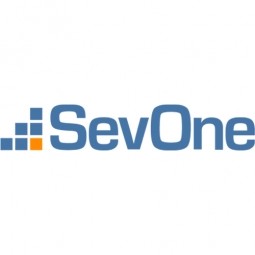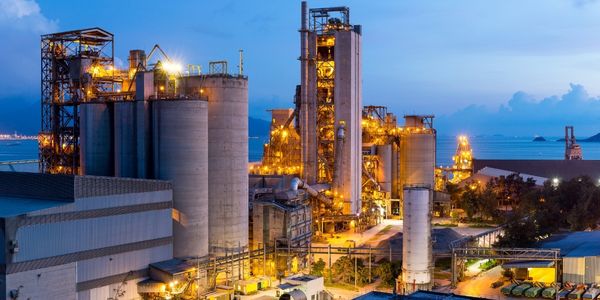IBM SevOne Network Performance Management: Optimizing IT Operations with Application-Centric Network Observability

Technology Category
- Infrastructure as a Service (IaaS) - Hybrid Cloud
- Networks & Connectivity - WiFi
Applicable Industries
- Cement
- Construction & Infrastructure
Applicable Functions
- Human Resources
- Maintenance
Use Cases
- Structural Health Monitoring
- Traffic Monitoring
Services
- Cloud Planning, Design & Implementation Services
- System Integration
The Customer
Not disclosed
About The Customer
IBM SevOne NPM is designed for a wide range of industries, including managed service providers, financial service companies, and communication service providers. Managed service providers can mitigate the transitional risk of moving from traditional WANs to SD-WANs with next-gen network monitoring capabilities from SevOne NPM. Financial services organizations choose SevOne NPM for complete network performance visibility. Communication service providers can better manage network capacity for increased customer business and reduce churn with SevOne NPM.
The Challenge
The modern network management landscape is fraught with complexities, necessitating monitoring solutions that are dynamic, flexible, and scalable. Network infrastructures built for digital transformation require these solutions to keep pace with their evolving environments. The challenge lies in spotting, addressing, and preventing network performance issues in hybrid environments. The goal is to boost network performance and improve user application experience by proactively monitoring multivendor networks, and turning insights into action across enterprise, communication, and managed service provider environments.
The Solution
IBM SevOne Network Performance Management (IBM SevOne NPM) is designed to address these challenges. It provides application-centric, network observability to help NetOps identify and resolve network performance issues in hybrid environments. The solution goes beyond detection, combining industry-leading expertise and advanced analytics to help teams act on what matters: improving network performance to provide an exceptional user experience. It enables next-gen networks, scales with speed and accuracy, and provides a full view of the network environment. It also offers features like flow analysis, ITOps integration, dynamic capacity planning, simple troubleshooting workflows, AIOps integration, ITSM integration, comprehensive data collection, advanced analytics with machine learning, enhanced visualization, scalability for any network, hybrid cloud network monitoring, SD-WAN monitoring, enterprise wifi monitoring, and SDN monitoring.
Operational Impact

Case Study missing?
Start adding your own!
Register with your work email and create a new case study profile for your business.
Related Case Studies.

Case Study
System 800xA at Indian Cement Plants
Chettinad Cement recognized that further efficiencies could be achieved in its cement manufacturing process. It looked to investing in comprehensive operational and control technologies to manage and derive productivity and energy efficiency gains from the assets on Line 2, their second plant in India.

Case Study
IoT System for Tunnel Construction
The Zenitaka Corporation ('Zenitaka') has two major business areas: its architectural business focuses on structures such as government buildings, office buildings, and commercial facilities, while its civil engineering business is targeted at structures such as tunnels, bridges and dams. Within these areas, there presented two issues that have always persisted in regard to the construction of mountain tunnels. These issues are 'improving safety" and "reducing energy consumption". Mountain tunnels construction requires a massive amount of electricity. This is because there are many kinds of electrical equipment being used day and night, including construction machinery, construction lighting, and ventilating fan. Despite this, the amount of power consumption is generally not tightly managed. In many cases, the exact amount of power consumption is only ascertained when the bill from the power company becomes available. Sometimes, corporations install demand-monitoring equipment to help curb the maximum power demanded. However, even in these cases, the devices only allow the total volume of power consumption to be ascertained, or they may issue warnings to prevent the contracted volume of power from being exceeded. In order to tackle the issue of reducing power consumption, it was first necessary to obtain an accurate breakdown of how much power was being used in each particular area. In other words, we needed to be able to visualize the amount of power being consumed. Safety, was also not being managed very rigorously. Even now, tunnel construction sites often use a 'name label' system for managing entry into the work site. Specifically, red labels with white reverse sides that bear the workers' names on both sides are displayed at the tunnel work site entrance. The workers themselves then flip the name label to the appropriate side when entering or exiting from the work site to indicate whether or not they are working inside the tunnel at any given time. If a worker forgets to flip his or her name label when entering or exiting from the tunnel, management cannot be performed effectively. In order to tackle the challenges mentioned above, Zenitaka decided to build a system that could improve the safety of tunnel construction as well as reduce the amount of power consumed. In other words, this new system would facilitate a clear picture of which workers were working in each location at the mountain tunnel construction site, as well as which processes were being carried out at those respective locations at any given time. The system would maintain the safety of all workers while also carefully controlling the electrical equipment to reduce unnecessary power consumption. Having decided on the concept, our next concern was whether there existed any kind of robust hardware that would not break down at the construction work site, that could move freely in response to changes in the working environment, and that could accurately detect workers and vehicles using radio frequency identification (RFID). Given that this system would involve many components that were new to Zenitaka, we decided to enlist the cooperation of E.I.Sol Co., Ltd. ('E.I.Sol') as our joint development partner, as they had provided us with a highly practical proposal.

Case Study
Splunk Partnership Ties Together Big Data & IoT Services
Splunk was faced with the need to meet emerging customer demands for interfacing IoT projects to its suite of services. The company required an IoT partner that would be able to easily and quickly integrate with its Splunk Enterprise platform, rather than allocating development resources and time to building out an IoT interface and application platform.

Case Study
Bridge monitoring in Hamburg Port
Kattwyk Bridge is used for both rail and road transport, and it has played an important role in the Port of Hamburg since 1973. However, the increasing pressure from traffic requires a monitoring solution. The goal of the project is to assess in real-time the bridge's status and dynamic responses to traffic and lift processes.

Case Study
Bellas Landscaping
Leading landscaping firm serving central Illinois streamlines operations with Samsara’s real-time fleet tracking solution: • 30+ vehicle fleet includes International Terrastar dump trucks and flatbeds, medium- and light-duty pickups from Ford and Chevrolet. Winter fleet includes of snow plows and salters.



